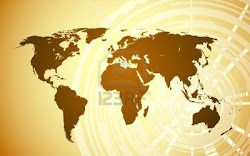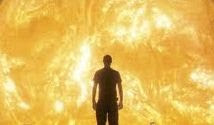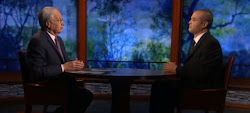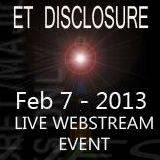Dear Friends,
http://www.scientificamerican.com/article.cfm?id=multiverse-the-case-for-parallel-universe
Be Well.
David Image: Chad Hagen
Image: Chad Hagen Supplemental Material
Welcome to the Multiverse
By Alexander Vilenkin
The universe as we know it originated in a great explosion that we call the big bang. For nearly a century cosmologists have been studying the aftermath of this explosion: how the universe expanded and cooled down, and how galaxies were gradually pulled together by gravity. The nature of the bang itself has come into focus only relatively recently. It is the subject of the theory of inflation, which was developed in the early 1980s by Alan Guth, Andrei Linde and others, and has led to a radically new global view of the universe.
Inflation is a period of super-fast, accelerated expansion in early cosmic history. It is so fast that in a fraction of a second a tiny subatomic speck of space is blown to dimensions much greater than the entire currently observable region. At the end of inflation, the energy that drove the expansion ignites a hot fireball of particles and radiation. This is what we call the big bang.
 The end of inflation is triggered by quantum, probabilistic processes and does not occur everywhere at once. In our cosmic neighborhood, inflation ended 13.7 billion years ago, but it still continues in remote parts of the universe, and other “normal” regions like ours are constantly being formed.
The end of inflation is triggered by quantum, probabilistic processes and does not occur everywhere at once. In our cosmic neighborhood, inflation ended 13.7 billion years ago, but it still continues in remote parts of the universe, and other “normal” regions like ours are constantly being formed.The new regions appear as tiny, microscopic bubbles and immediately start to grow. The bubbles keep growing without bound; in the meantime they are driven apart by the inflationary expansion, making room for more bubbles to form. This never-ending process is called eternal inflation. We live in one of the bubbles and can observe only a small part of it. No matter how fast we travel, we cannot catch up with the expanding boundaries of our bubble, so for all practical purposes we live in a self-contained bubble universe.
The theory of inflation explained some otherwise mysterious features of the big bang, which simply had to be postulated before. It also made a number of testable predictions, which were then spectacularly confirmed by observations. By now inflation has become the leading cosmological paradigm.
Another key aspect of the new worldview derives from string theory, which is at present our best candidate for the fundamental theory of nature. String theory admits an immense number of solutions describing bubble universes with diverse physical properties. The quantities we call constants of nature, such as the masses of elementary particles, Newton’s gravitational constant, and so on, take different values in different bubble types. Now combine this with the theory of inflation. Each bubble type has a certain probability to form in the inflating space. So inevitably, an unlimited number of bubbles of all possible types will be formed in the course of eternal inflation.
This picture of the universe, or multiverse, as it is called, explains the long-standing mystery of why the constants of nature appear to be fine-tuned for the emergence of life. The reason is that intelligent observers exist only in those rare bubbles in which, by pure chance, the constants happen to be just right for life to evolve. The rest of the multiverse remains barren, but no one is there to complain about that.
Some of my physicist colleagues find the multiverse theory alarming. Any theory in physics stands or falls depending on whether its predictions agree with the data. But how can we verify the existence of other bubble universes? Paul Steinhardt and George Ellis have argued, for example, that the multiverse theory is unscientific, because it cannot be tested, even in principle.
Surprisingly, observational tests of the multiverse picture may in fact be possible. Anthony Aguirre, Matt Johnson, Matt Kleban and others have pointed out that a collision of our expanding bubble with another bubble in the multiverse would produce an imprint in the cosmic background radiation—a round spot of higher or lower radiation intensity. A detection of such a spot with the predicted intensity profile would provide direct evidence for the existence of other bubble universes. The search is now on, but unfortunately there is no guarantee that a bubble collision has occurred within our cosmic horizon.
There is also another approach that one can follow. The idea is to use our theoretical model of the multiverse to predict the constants of nature that we can expect to measure in our local region. If the constants vary from one bubble universe to another, their local values cannot be predicted with certainty, but we can still make statistical predictions. We can derive from the theory what values of the constants are most likely to be measured by a typical observer in the multiverse. Assuming that we are typical—the assumption that I called the principle of mediocrity—we can then predict the likely values of the constants in our bubble.
This strategy has been applied to the energy density of the vacuum, also known as “dark energy”. Steven Weinberg has noted that in regions where dark energy is large, it causes the universe to expand very fast, preventing mater from clumping into galaxies and stars. Observers are not likely to evolve in such regions. Calculations showed that most galaxies (and therefore most observers) are in regions where the dark energy is about the same as the density of matter at the epoch of galaxy formation. The prediction is therefore that a similar value should be observed in our part of the universe.
For the most part, physicists did not take these ideas seriously, but much to their surprise, dark energy of roughly the expected magnitude was detected in astronomical observations in the late 1990s. This could be our rst evidence that there is indeed a huge multiverse out there. It has changed many minds.
The multiverse theory is still in its infancy, and some conceptual problems remain to be resolved. But, as Leonard Susskind wrote, “I would bet that at the turn of the 22nd century philosophers and physicists will look nostalgically at the present and recall a golden age in which the narrow provincial 20th century concept of the universe gave way to a bigger better [multiverse] ... of mind-boggling proportions.”
The Multiverse Strikes Back
By Max Tegmark
Do you really live in a multiverse, or is this notion beyond the pale of science?
Inspired by an interesting critique of multiverses in the August issue of Scientific American, penned by relativity pioneer George F. R. Ellis, let my give you my two cents' worth.
Multiverse ideas have traditionally received short shrift from the establishment: Giordano Bruno with his infinite-space multiverse got burned at the stake in 1600 and Hugh Everett with his quantum multiverse got burned on the physics job market in 1957. I've even felt some of the heat first-hand, with senior colleagues suggesting that my multiverse-related publications were nuts and would ruin my career. There's been a sea-change in recent years, however. Parallel universes are now all the rage, cropping up in books, movies and even jokes: "You passed your exam in many parallel universes—but not this one."
 This airing of ideas certainly hasn't led to a consensus among scientists, but it's made the multiverse debate much more nuanced and, in my opinion, more interesting, with scientists moving beyond shouting sound bites past each other and genuinely trying to understand opposing points of view. George Ellis's new article is a great example of this, and I highly recommend reading it if you haven't already.
This airing of ideas certainly hasn't led to a consensus among scientists, but it's made the multiverse debate much more nuanced and, in my opinion, more interesting, with scientists moving beyond shouting sound bites past each other and genuinely trying to understand opposing points of view. George Ellis's new article is a great example of this, and I highly recommend reading it if you haven't already.By our universe, I mean the spherical region of space from which light has had time to reach us during the 13.7 billion years since our big bang. When talking about parallel universes, I find it useful to distinguish between four different levels: Level I (other such regions far away in space where the apparent laws of physics are the same, but where history played out differently because things started out differently), Level II (regions of space where even the apparent laws of physics are different), Level III (parallel worlds elsewhere in the so-called Hilbert space where quantum reality plays out), and Level IV (totally disconnected realities governed by different mathematical equations).
In his critique, George classifies many of the arguments in favor of these multiverse levels and argues that they all have problems. Here's my summary of his main anti-multiverse arguments:
1) Inflation may be wrong (or not eternal)
2) Quantum mechanics may be wrong (or not unitary)
3) String theory may be wrong (or lack multiple solutions)
4) Multiverses may be unfalsifiable
5) Some claimed multiverse evidence is dubious
6) Fine-tuning arguments may assume too much
7) It's a slippery slope to even bigger multiverses
(George didn't actually mention (2) in the article, but I'm adding it here because I think he would have if the editor had allowed him more than six pages.)
What's my take on this critique? Interestingly, I agree with all of these seven statements and nonetheless, I'll still happily bet my life savings on the existence of a multiverse!
Let's start with the first four. Inflation naturally produces the Level I multiverse, and if you add in string theory with a landscape of possible solutions, you get Level II, too. Quantum mechanics in its mathematically simplest ("unitary") form gives you Level III. So if these theories are ruled out, then key evidence for these multiverses collapses.
Remember: Parallel universes are not a theory—they are predictions of certain theories.
To me, the key point is that if theories are scientific, then it's legitimate science to work out and discuss all their consequences even if they involve unobservable entities. For a theory to be falsifiable, we need not be able to observe and test all its predictions, merely at least one of them. My answer to (4) is therefore that what's scientifically testable are our mathematical theories, not necessarily their implications, and that this is quite OK. For example, because Einstein's theory of general relativity has successfully predicted many things that we can observe, we also take seriously its predictions for things we cannot observe, e.g., what happens inside black holes.
Likewise, if we're impressed by the successful predictions of inflation or quantum mechanics so far, then we need to take seriously also their other predictions, including the Level I and Level III multiverse. George even mentions the possibility that eternal inflation may one day be ruled out—to me, this is simply an argument that eternal inflation is a scientific theory.
String theory certainly hasn't come as far as inflation and quantum mechanics in terms of establishing itself as a testable scientific theory. However, I suspect that we'll be stuck with a Level II multiverse even if string theory turns out to be a red herring. It's quite common for mathematical equations to have multiple solutions, and as long as the fundamental equations describing our reality do, then eternal inflation generically creates huge regions of space that physically realize each of these solutions. For example, the equations governing water molecules, which have nothing to do with string theory, permit the three solutions corresponding to steam, liquid water and ice, and if space itself can similarly exist in different phases, inflation will tend to realize them all.
George lists a number of observations purportedly supporting multiverse theories that are dubious at best, like evidence that certain constants of nature aren't really constant, evidence in the cosmic microwave background radiation of collisions with other universes or strangely connected space, etc. I totally share his skepticism to these claims. In all these cases, however, the controversies have been about the analysis of the data, much like in the cold fusion debacle. To me, the very fact that scientists are making these measurements and arguing about data details is further evidence that this is within the pale of science: this is precisely what separates a scientific controversy from a nonscientific one!
Our universe appears surprisingly fine-tuned for life in the sense that if you tweaked many of our constants of nature by just a tiny amount, life as we know it would be impossible. Why? If there's a Level II multiverse where these "constants" take all possible values, it's not surprising that we find ourselves in one of the rare universes that are inhabitable, just like it's not surprising that we find ourselves living on Earth rather than Mercury or Neptune. George objects to the fact that you need to assume a multiverse theory to draw this conclusion, but that's how we test any scientific theory: we assume that it's true, work out the consequences, and discard the theory if the predictions fail to match the observations. Some of the fine-tuning appears extreme enough to be quite embarrassing—for example, we need to tune the dark energy to about 123 decimal places to make habitable galaxies. To me, an unexplained coincidence can be a tell-tale sign of a gap in our scientific understanding. Dismissing it by saying "We just got lucky—now stop looking for an explanation!" is not only unsatisfactory, but is also tantamount to ignoring a potentially crucial clue.
George argues that if we take seriously that anything that could happen does happen, we're led down a slippery slope toward even larger multiverses, like the Level IV one. Since this is my favorite multiverse level, and I'm one of the very few proponents of it, this is a slope that I'm happy to slide down!
George also mentions that multiverses may fall foul of Occam's razor by introducing unnecessary complications. As a theoretical physicist, I judge the elegance and simplicity of a theory not by its ontology, but by the elegance and simplicity of its mathematical equations—and it's quite striking to me that the mathematically simplest theories tend to give us multiverses. It's proven remarkably hard to write down a theory which produces exactly the universe we see and nothing more.
Finally, there's an anti-multiverse argument which I commend George for avoiding, but which is in my opinion the most persuasive one of all for most people: the parallel universes just seems too weird to be true.
Having looked at anti-multiverse arguments, let's now analyze the pro-multiverse case a bit more closely. I'm going to argue that all the controversial issues melt away if we accept the External Reality Hypothesis: there exists an external physical reality completely independent of us humans. Suppose that this hypothesis is correct. Then most multiverse critique rests on some combination of the following three dubious assumptions:
1) Omnivision assumption: physical reality must be such that at least one observer can in principle observe all of it.
2) Pedagogical reality assumption: physical reality must be such that all reasonably informed human observers feel they intuitively understand it.
3) No-copy assumption: no physical process can copy observers or create subjectively indistinguishable observers.
(1) and (2) appear to be motivated by little more than human hubris. The omnivision assumption effectively redefines the word "exists'' to be synonymous with what is observable to us humans, akin to an ostrich with its head in the sand. Those who insist on the pedagogical reality assumption will typically have rejected comfortingly familiar childhood notions like Santa Claus, local realism, the Tooth Fairy, and creationism—but have they really worked hard enough to free themselves from comfortingly familiar notions that are more deeply rooted? In my personal opinion, our job as scientists is to try to figure out how the world works, not to tell it how to work based on our philosophical preconceptions.
If the omnivision assumption is false, then there are unobservable things that exist and we live in a multiverse.
If the pedagogical reality assumption is false, then the objection that multiverses are too weird makes no logical sense.
If the no-copy assumption is false, then there's no fundamental reason why there can't be copies of you elsewhere in the external reality—indeed, both eternal inflation and unitary quantum mechanics provide mechanisms for creating them.
We humans have a well-documented tendency toward hubris, arrogantly imagining ourselves at center stage, with everything revolving around us. We've gradually learned that it's instead we who are revolving around the sun, which is itself revolving around one galaxy among countless others. Thanks to breakthroughs in physics, we may be gaining still deeper insights into the very nature of reality.
The price we have to pay is becoming more humble—which will probably do us good—but in return we may find ourselves inhabiting a reality grander than our ancestors dreamed of in their wildest dreams.
Additional Reading:
Many Worlds in One: The Search for Other Universes. Alex Vilenkin. Hill and Wang, 2006.
The Cosmic Landscape: String Theory and the Illusion of Intelligent Design. Leonard Susskind. Back Bay Books, 2006.
The Hidden Reality: Parallel Universes and the Hidden Laws of the Cosmos. Brian Greene. Knopf, 2011.

 Overview Does the Multiverse Really Exist?
Overview Does the Multiverse Really Exist?  Overview Leonard Susskind: The Bad Boy of Physics
Overview Leonard Susskind: The Bad Boy of Physics 


